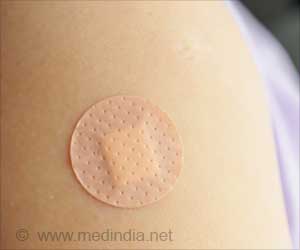More and more radiologists are switching from traditional X-ray film to digital mammograms, despite some glitches.
More and more radiologists are switching from the traditional X-ray film to digital mammograms in the US. In the case of digital, the X-ray images are displayed on a computer monitor.
The changeover might necessitate repeat mammograms, for the digital and film versions can sometimes be hard to reconcile. Consequently radiologists who are retraining their eyes and minds may be more likely to play it safe by requesting additional X-rays — and sometimes ultrasound exams and even biopsies — in women who turn out not to have breast cancer. Still it is all worth the effort, it is felt.Digital is indeed growing fast. In the United States, 32 percent of mammography clinics now have at least one digital machine, up from only 10 percent two years ago. Eventually film will be phased out, predicts DENISE GRADY, writing in the New York Times.
The rush to digital is occurring in part because for certain women — younger ones and others with dense breast tissue — it is better than film at finding tumors. Digital is especially good at picking up tiny calcium deposits, or calcifications, which are sometimes — but by no means always — a sign of cancer. In the long run, radiologists say, digital technology will make mammograms more accurate for many women.
About 35.8 million mammograms a year are done in the United States, including those for screening and follow-ups for problems. The National Cancer Institute recommends mammograms every year or two for most women over 40 (women at high risk may be advised to start earlier). Mammography is not perfect — it can miss tumors — but even its critics say it has helped to lower death rates from breast cancer, which is the second leading cause of cancer deaths in women, after lung cancer.
There are about 178,000 new cases of breast cancer each year in the United States, and 40,000 deaths.
Dr. Mary Mahoney, a professor of radiology and the director of breast imaging at the University of Cincinnati Medical Center, is convinced that the digital is the future, notwithstanding the uncertainties involved at the moment.
Advertisement
Radiologists point out that one of digital’s advantages is that it lets them adjust features like contrast and magnification, and see things that were blurry or maybe even invisible on film. In the long run, doctors say, the increased clarity of digital mammograms may lead to fewer callbacks of healthy women — but it takes time to learn the ropes.
A buzz grew around digital after the study. Some radiologists use the technology as a selling point, and others feel they must follow suit. Now there is such a demand for digital machines that there is a six-month wait for certain types, Dr. Zuley said, even though they cost $350,000 to $600,000, about three to five times as much as units that use film.
Dr. Margarita Zuley, the director of breast imaging at Magee-Women’s Hospital at the University of Pittsburgh Medical Center, said it could take six months to a year to learn to interpret the new images.
Lecturing in Manhattan recently about the transition to digital, Dr. Zuley told an audience of radiologists: “When you first start out, you may feel a little anxious and recall more patients because everything looks like a cancer to you. It’s O.K. Just bring the patients back. It’s part of the learning curve.”
Source-Medindia
GPL/L








